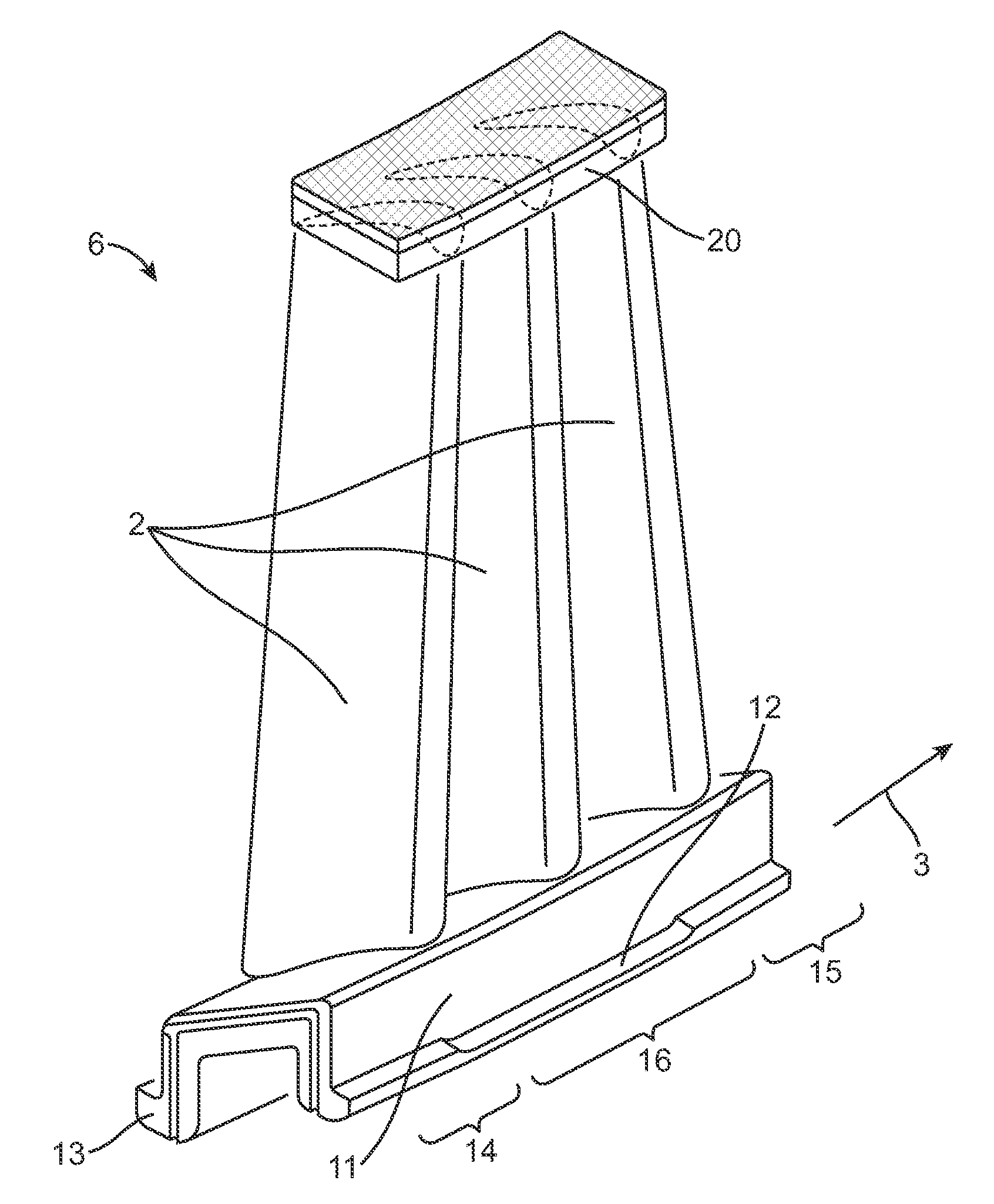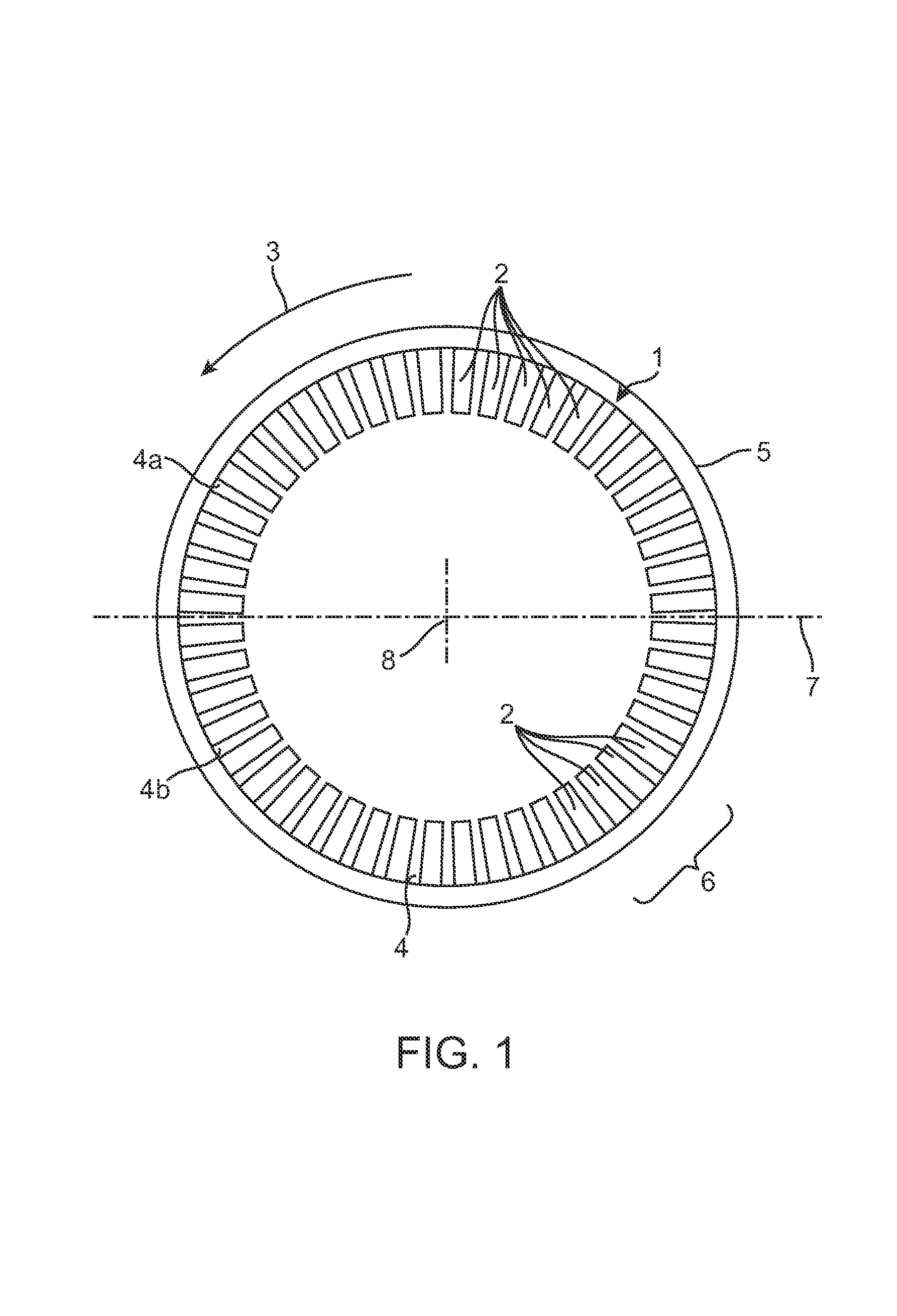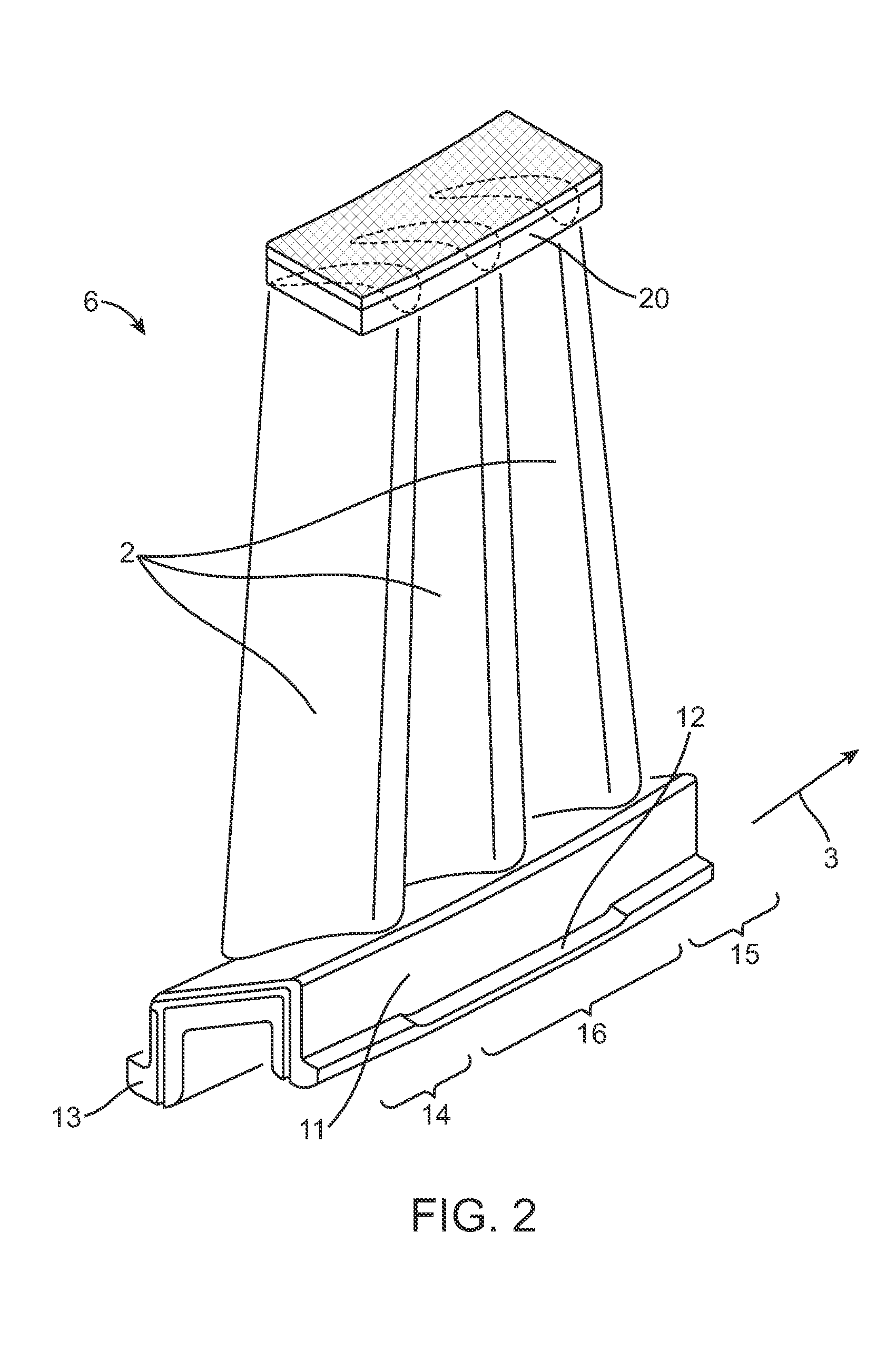Guide vane ring of a turbomachine and associated modification method
a technology of turbomachines and ring rings, which is applied in the direction of machines/engines, stators, liquid fuel engines, etc., can solve the problems of particularly intensive fixing of vanes or vane groups on the vane carrier, and achieve the effect of reducing the risk of crack formation
- Summary
- Abstract
- Description
- Claims
- Application Information
AI Technical Summary
Benefits of technology
Problems solved by technology
Method used
Image
Examples
Embodiment Construction
[0024]According to FIG. 1, a guide vane ring 1 of a turbomachine, not otherwise illustrated, preferably of a turbine or compressor, preferably of a gas turbine, possesses a plurality of guide vanes or, in brief, vanes 2 which are arranged adjacently to one another in the circumferential direction 3. The vanes 2 are fastened on a vane carrier 4 which is itself fastened to a casing 5 of the turbomachine.
[0025]In this case, the vanes 2 may be fastened individually to the vane carrier 4 or be combined into vane groups 6 which are formed from two or more vanes 2 and are jointly fastened on the vane carrier 4. The vane carrier 4 is in this case of annular design and is expediently divided in the region of a parting plane 7 in which preferably an axis of rotation 8 or longitudinal center axis 8 of the turbomachine also lies, so that, according to FIG. 1, there are an upper vane carrier part 4a and a lower vane carrier part 4b. It is clear that a vane carrier 4 of this type may basically al...
PUM
 Login to View More
Login to View More Abstract
Description
Claims
Application Information
 Login to View More
Login to View More - R&D
- Intellectual Property
- Life Sciences
- Materials
- Tech Scout
- Unparalleled Data Quality
- Higher Quality Content
- 60% Fewer Hallucinations
Browse by: Latest US Patents, China's latest patents, Technical Efficacy Thesaurus, Application Domain, Technology Topic, Popular Technical Reports.
© 2025 PatSnap. All rights reserved.Legal|Privacy policy|Modern Slavery Act Transparency Statement|Sitemap|About US| Contact US: help@patsnap.com



